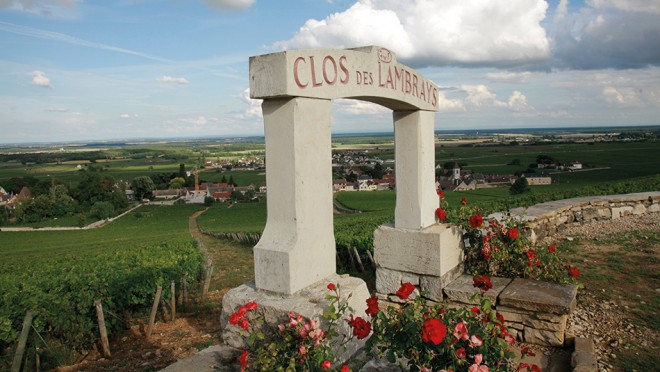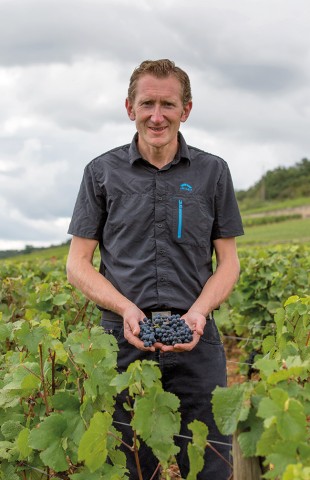Formerly the director of Louis Latour estates, last year Boris Champy took over the helm at the Domaine des Lambrays. He is responsible for one of the finest Côte de Nuits terroirs, the Clos des Lambrays. A Grand Cru that has recovered its former glory in Burgundy by dint of perseverance.

The astonishing saga of Clos des Lambrays continues. The Burgundy estate stopped producing at the beginning of the 1980s. The family who were the previous owners did not even renew the vine stock, and the manor house of Morey-Saint-Denis had become uninhabitable. A state of affairs that would be unthinkable today! The 8.66 hectares of land of the Clos des Lambrays was more like a paradise for rabbits than the future brand destined to embody French luxury. That was before the winemaking director, Thierry Brouin, brought it back to life.
The Saier brothers, who, at the time, also owned the distribution group Félix Potin, among other things, and then German industrialist Günter Freund (who bought the estate in 1996) were the successive owners after 1979. The quality of the wines started to improve vastly in the 1990s, when the vines, renewed by Thierry Brouin, began to come of age. Boris Champy was appointed to succeed Thierry Brouin. In the meantime (in 2014), LVMH, the world leader in the luxury sector, took over the estate*. What was Boris Champy’s road map? “Carte blanche to give the Domaine des Lambrays a bright future; the aim was to make Clos des Lambrays one of the most sought after grands crus” he confirms: “LVMH has the particularity of possessing very exclusive Houses, Moët et Chandon, Veuve Clicquot, Ruinart, Krug, etc. (editor’s note: we could also mention Château Cheval Blanc or Yquem!). They have all remained entities in their own right.”

He produced the 2017 vintage of Clos des Lambrays in tandem with Thierry Brouin. His priority was to gain a better understanding of the terroir. In Burgundy, a Climat is never completely uniform, even if it has been identified as a plot since 1365. Boris Champy had extensive soil and geology studies carried out. This allowed him to make a first, very reassuring observation: “We noted that we could dig with a shovel up to 60 cm in depth meeting no resistance, and that there are lots of earthworms”, he explained. This is a sign that the soil is healthy and has not been compacted. These studies will enable him to refine the selection for the vintages. At the next harvest, there will be 7 in all. Also, a cuvée of Clos des Lambrays from a plot dating from 1898 will be vinified separately.
The pragmatic, rational Boris Champy is not about to announce any revolutions at Clos des Lambrays. Organic or biodynamic certification is not on the agenda for the vineyard. “Winemaking must be environmentally friendly but must not neglect the basis of agronomy. The plant must be the central focus of the vintner: a well-worked soil, respectful pruning, airy vine canopy, small, high-quality production, good reserves kept for the following vintage. Enormous progress has been made over the past 25 years; any approach that tends towards sensitive vine growing is good, the motto I repeat to my team every day: You have to love the grapevine, and love the wine”.
In the cellar, alongside other practices, the vinification of the whole grape harvest will remain the preferred approach (between 70 and 100% on the last millésimes). “It adds a slight spicy note but you have to be careful not to bring out the tannins too much. Clos des Lambrays is a sophisticated terroir. I find that the whole bunch works very well here”. We tasted the 2017 vintage in casks at the estate, in comparison to a trial with destemmed bunches. The result largely confirms this choice. Why change a winning team?
* The estate also owns parcels in Morey-Saint-Denis Premier Cru
and Morey-Saint-Denis Village (red) and in Premiers Crus Puligny-Montrachet
Les Folatières and Clos du Cailleret (white)